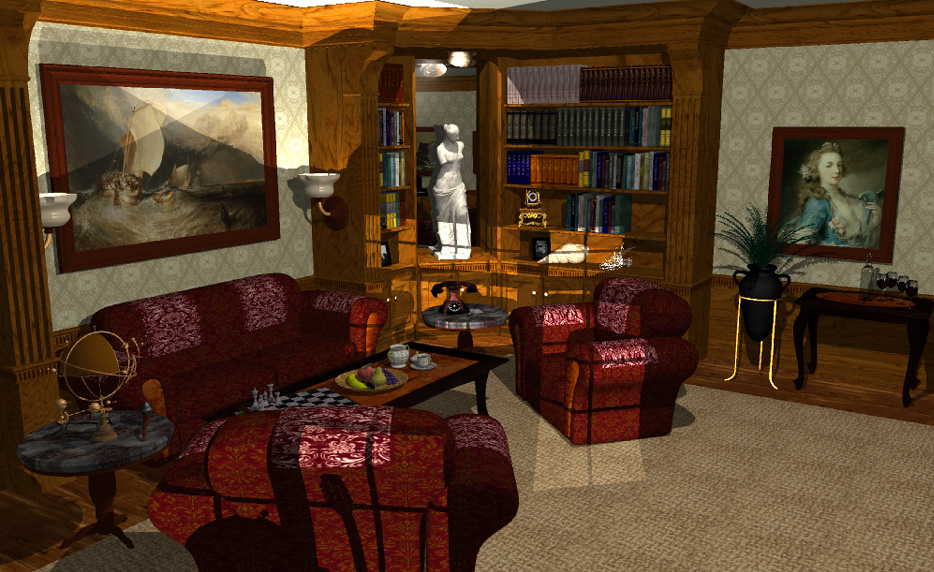 |
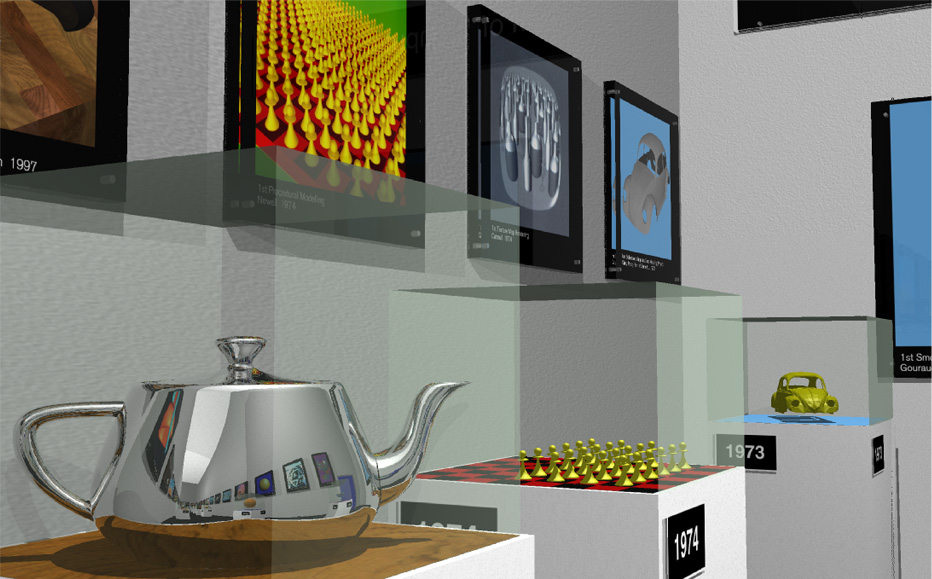 |
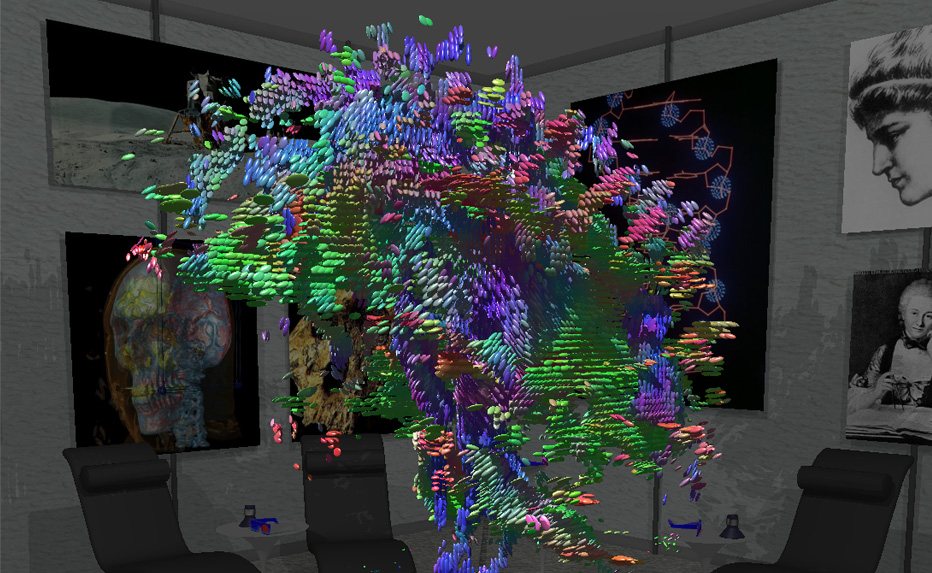 |
 |
 |
(left to right) Living Room Scene, Graphics Museum, Science Room, Galaxy Room, Atlantis Scene
Featuring four themed rooms, connected with transparent submerged tubes, the virtual tour carried audiences through scenes that demonstrated the application benefits of Star-Ray's ray-tracing engine: photorealistic refraction, reflection, and shading; direct rendering of curved-surface models; and interactive manipulation and navigation of large-scale scientific data.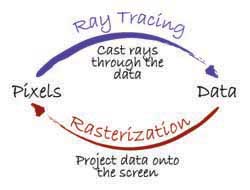
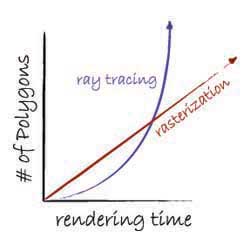
In addition to the long-term algorithmic complexity advantages of ray-tracing, there are three primary technical advantages of ray-traced rendering: scalability, flexibility, and interactivity.
Scalability
We have demonstrated the Star-Ray system to scale near-linearly on a 1024-processor SGI Origin system. The fast shared-memory architectures of the SGI Origins provide an ideal architecture for Star-Ray's image-space parallel algorithm. Pioneered by Dr. Steve Parker, Star-Ray has been intricately designed and implemented to target linear scalability, with elegant load-balancing and ultra-efficient ray-object intersection algorithms at its core.Flexibility
Designed as a flexible platform for prototyping and evaluating new ray-tracing research, Star-Ray provides an intuitive interface into the system for adding new lighting and shading models, as well as new objects. Because of this flexibility, we easily extended the software to handle the myriad new models that were incorporated into the SIGGRAPH demo.Interactivity
While Star-Ray has impressive photorealistic benefits, the system would be much less compelling if it were not for its interactivity. The system supports adaptive jittered sampling and frameless rendering in order to provide maximal interactivity without sacrificing image quality.Credits
Led by David Weinstein (SCI Institute PhD student and NCRR Technical Manager), the Star-Ray SIGGRAPH demo was championed by fellow team-leaders Dav de St. Germain, Helen H. Hu, William Martin, R. Keith Morley, and Chris Moulding; with huge technical support from James Bigler, Marty Cole, Dave DeMarle, Gordon Kindlmann, Aaron Lefohn, Brandon Mansfield, Steve Parker, Simon Premoze, Shaun Ramsey, Erik Reinhard, Peter Shirley, and Chris Wyman; stunning artistic support from Richard Coffey, Nathan Galli, and Erik Jorgensen; and enormous facility, administrative, and literary support from Chuck Hansen, Chris Johnson, Greg Jones, and Blythe Nobleman.On a final note, the Star-Ray Team would like to gratefully acknowledge our SGI partners for loaning us the equipment (128 processor Origin 3800) and space (prominent corner booth location) for our SIGGRAPH 2002 Star-Ray demonstration.
